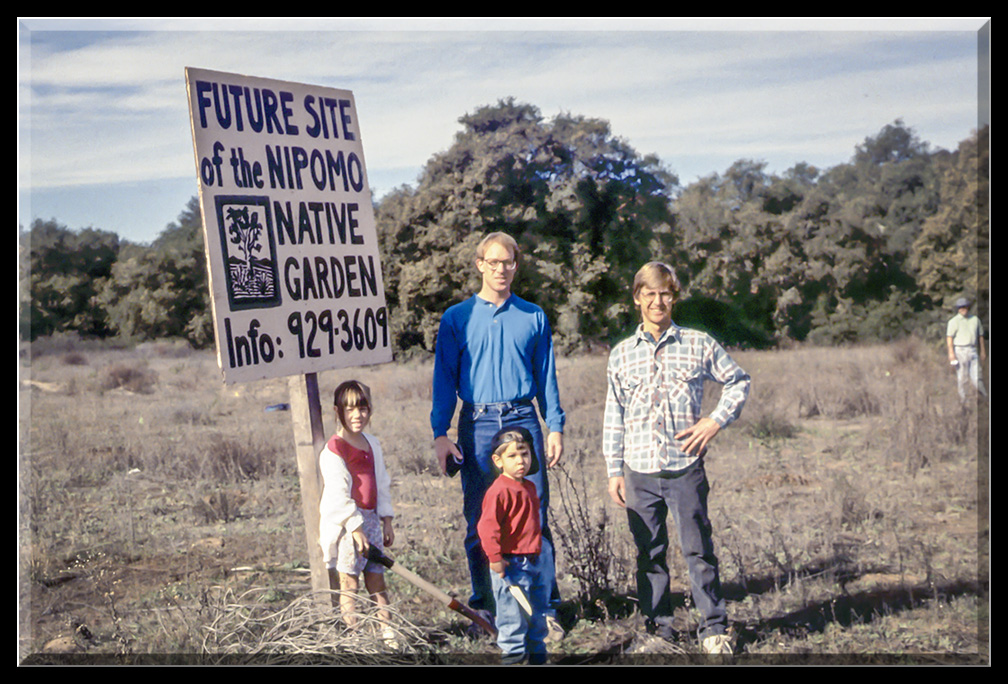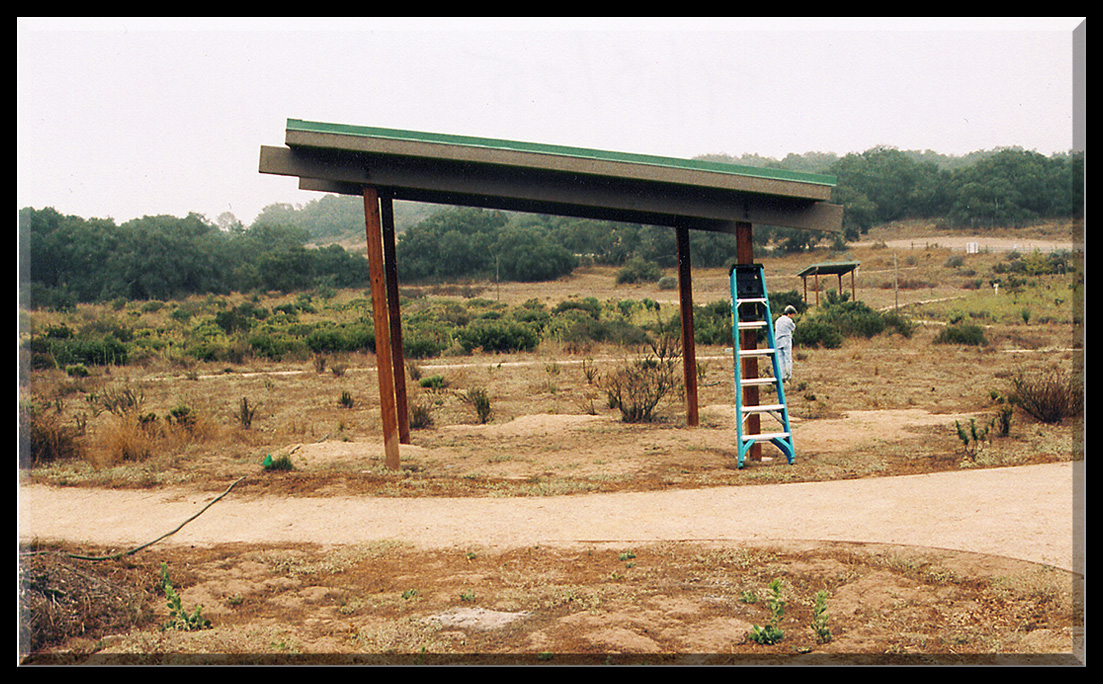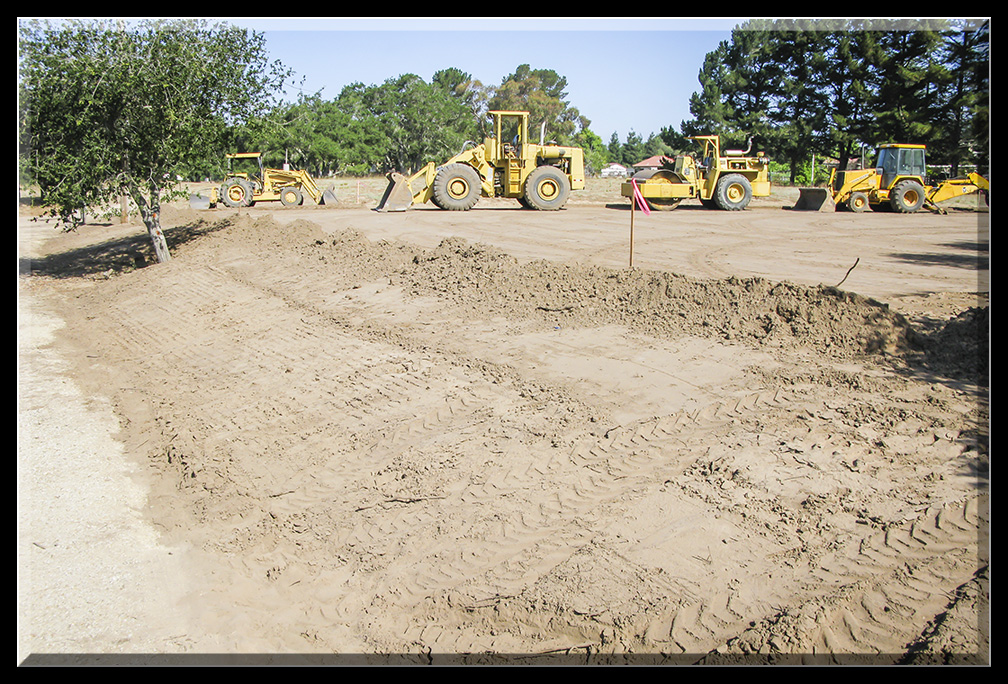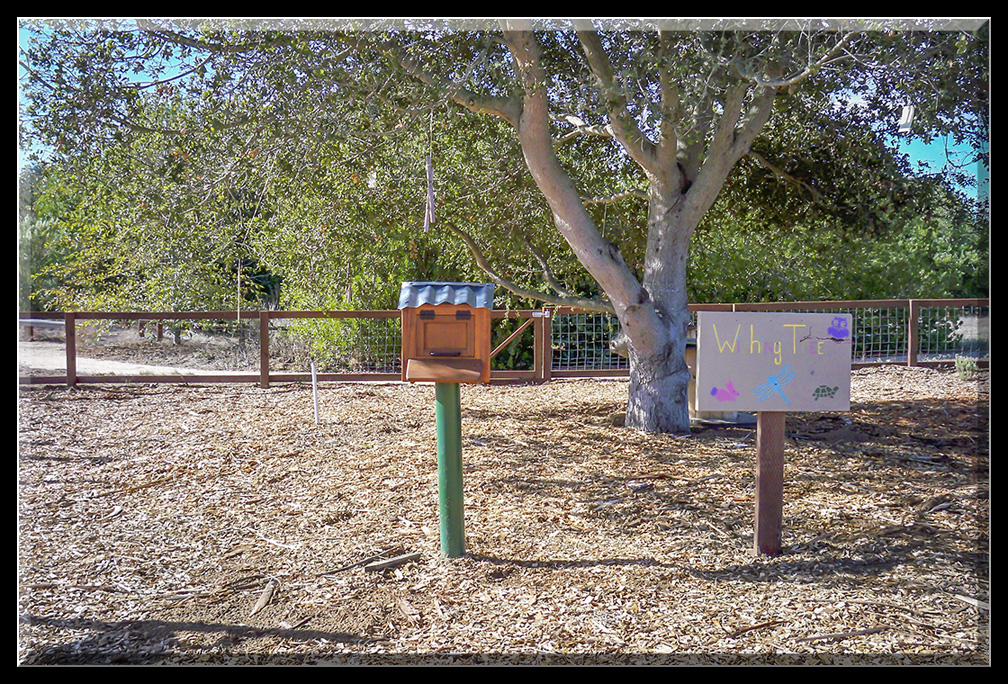Garden History
The Nipomo Native Garden project began in 1993, when a group of citizens proposed a plan to the county parks department to preserve an orphaned 12 acre parcel of Nipomo Regional Park that was slated to be sold. This weed-choked, gopher-riddled site, located at the intersection of Pomeroy and Camino Caballo, was turned over to the NNG by the SLO County Parks Department in an "adopt a park" arrangement under the non-profit umbrella of "San Luis Obispo Pathways Openspace and Trails" (SLOPOST). Design, initial irrigation and plantings began in 1994 and continued to expand annually. In 1998 the NNG was officially placed on the County Parks Master Plan. In the year 2000, Nipomo Native Garden finalized and adopted the guidelines of a renewable lease agreement with SLO County. By-laws were developed in 2001 and the Nipomo Native Garden was officially approved as a 501(c)(3) non-profit corporation on November 16, 2001.
The NNG's specific goal is to feature the plant communities that are native to the Nipomo mesa dune complex: oak woodland, maritime chaparral, manzanita, coastal sage scrub, coastal dune scrub, riparian/wetland, and grassland. These have been planted in an associative framework that mirrors their natural relationships. Currently the oak woodland, maritime chaparral and manzanita areas are complete. The wetland is done and the riparian area is partially complete; the grassland is in the beginning stages of being developed.
A number of grants were obtained over the years to pay for the development of the garden. The largest was from the Unocal Oil Spill Remediation Fund for $164,200 which allowed us to put in most of the garden hardscape----fencing around the perimeter, paths, information kiosks and a parking lot. Maintenance expenses are paid for through yearly membership dues and our annual plant sale held in early October each year.
The Nipomo Native Garden has never had any paid employees. The garden is managed by a small board of directors and all work has been done by dedicated volunteers.
Key Milestone Events
| Date | Event | Image |
|---|---|---|
| 1993 | Group of Nipomo residents approached SLO County Parks Department with a request to establish a Native Garden on 12 acres of the Nipomo Regional Park. |  |
| 1994 | Nipomo Native Garden Committee formed and organized under the umbrella of SLOPOST. | |
| 1996 | David Fross of Native Sons Nursery developed an initial garden design. | |
| October 1997 | Nipomo Native Garden (NNG) received a $1,750 grant from SLO County for the development of the Wetlands. |  |
| June 1998 | Fire Ring and seating area was created as part of an Eagle Scout project. | |
| 2000 | The NNG wrote a grant requesting funds from the Unocal Oil settlement. We were funded in the amount of $164,200 to perform a habitat restoration and to develop the Garden. | |
| August 2000 | Original 10 year lease for the Garden was signed by the County Board of Supervisors. | |
| September 17, 2001 | The Nipomo Native Garden was incorporated. NNG became an official 501(c)(3) non-profit organization March 21, 2002. Our California state non-profit status was effective October 2005. |
|
| 2004 | Graded pathways were installed with the help of the California Conservation Corps. The decomposed granite base is all-weather and wheelchair accessible. |  |
| 2005 | Three information Kiosks were designed and built by volunteers. Considerable effort was expended to wheelbarrow all the concrete used to set the posts. |  |
| 2006 | Barbwire fencing was replaced by a much more attractive post and rail wood fence. | |
| 2009 | Off road parking lot was created off of Osage along the western edge of the Garden. Considerable design effort was expended to insure the use of recycled materials and the proper drainage and capture of rainfall. |  |
| 2011 | An onsite storage building was designed and built by volunteers to house our growing assortment of gardening equipment and supplies. | |
| 2013 | A Shade Sail structure was installed by volunteers to provide shaded seating over the ampitheater/fire ring area. | |
| 2015 | Children's Garden area development was initiated. Still a work in progress, it has been quickly adopted by many local families who have contributed various treasures to be enjoyed by all visitors. |  |
